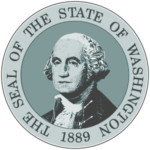The candidate possesses knowledge of the basic concepts, vocabulary, skills, and techniques of dance including elements, organizational principles, dance styles, techniques, and kinesthetic intelligence as primary tools for dance. The competent dance teacher possesses the knowledge and skills needed to communicate by creating, performing, and responding to dance. The competent dance teacher relates knowledge and skills within and across the arts, to other content areas, and in professional careers. The competent dance teacher understands and analyzes the role of dance within a variety of cultures and from different historical periods. The competent dance teacher investigates and understands the relationship between dance and contemporary issues.1.0 - Concepts, vocabulary, skills, and techniques
2.0 - The artistic process
3.0 - Connections
4.0 - History and cultural context
5.0 - Contemporary issues
Footer

Professional Educator Standards Board
Old Capitol Building
600 Washington Street SE
Olympia, WA 98504-7236
PESB@k12.wa.us
Paraboard@k12.wa.us
(360) 725-6275
STAY UPDATED
Sign up with your email address to receive news and event information.